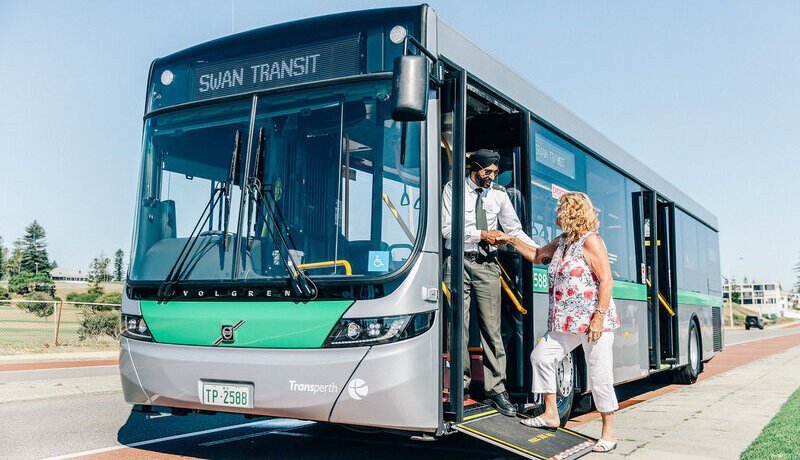Four Steps to Put an End to Distracted Driving
You’ve heard the stats: Distracted driving is now on par with speeding and even alcohol usage as a top cause of road fatalities and serious injuries. We all know the dangers of distracted driving — so why do we still do it? What makes us answer that text message, even when we know it’s unimportant, or take that phone call, when we’re constantly surrounded by evidence telling us it’s a bad idea?
For starters, we overestimate our own driving abilities. Sixty percent of drivers under the age of 35 believe talking on their cell phone makes no difference on their driving performance. In reality, research shows that drivers distracted on their cell phones may look at the road, but fail to see up to 50 percent of the information in their line of vision.
Researchers call this “inattention blindness,” similar to what you may already know as tunnel vision. You may feel as though you are paying attention to the road, but your brain cannot completely focus on both driving and the distraction at hand.
Distracted driving accidents can be a painful, expensive, and sometimes deadly reality check.
So how can fleet managers or company leaders help their employees overcome the human propensity to drive distracted? Try this four-step process to pave the way to safer roads.
Set clear policies and procedures.
Like most successful initiatives, stopping distracted driving begins with education.
Your drivers are probably aware they shouldn’t drive while on their phone, but they may not be clear on how to react in certain situations. For example, what should they do if their boss calls while they’re driving? What if they receive a text or email from a client with immediate needs? What if they’re running late for a delivery and receive a call from the person they’re delivering to?
Drivers need to fully understand not only that distracted driving isn’t allowed, but also what constitutes distracted driving and how to successfully avoid it. Give drivers clear and easy-to-follow guidelines regarding how they should react in scenarios that tempt them to take their eyes off of the road. Make the consequences of distracted driving equally clear. Then, make sure you follow through and enforce those consequences to give your policies credibility.
Leverage technology.
You can’t ride along with each of your employees to ensure they stick to the rules — but driving safety apps can.
GreenRoad’s VideoSense™ solution uses an advanced driver-facing camera to continuously monitor driver behavior, and AI-based intelligence, integrated with moment-by-moment driving behavior data provided by the GreenRoad Driver Safety Platform, to identify distracted driving in real time. When the system senses problematic driving, it sends out real-time alerts to the driver, the driver’s manager and central dispatch personnel, enabling immediate intervention in time to prevent disaster. When fleets deploy devices such as speakers and “chair shakers,” the system can literally “shake things up,” rousing the driver from nodding off and warning him to take a break!
Talk to your drivers/employees.
The important thing when designing your distracted driving policies is to ensure your corrective procedures are intended to “coach” drivers, rather than “catch” them. If drivers feel they are being stalked or parented, they are unlikely to be receptive to coaching or inclined to change their behavior.
It all starts with an open dialogue. Ask the driver why they were distracted and why they chose to react in the way that they did. Then, ask if they feel the current policies help or hurt them in getting their job done efficiently and properly. Let them share their opinion and offer to work together to find creative ways to cut down on commonly faced distractions.
Gamify and reward safe driving.
Recognizing employees when they do drive safely is a great way to positively reinforce good driving behavior.
Publicly acknowledge and reward employees who maintain a perfect undistracted driving record for a month, a quarter, or whatever goal makes sense for your company. You can create a safe driving leaderboard in a public space, like the break room, to call out these good drivers; include a shout-out in your company newsletter; or even reward them with a small gift card or free lunch.
You might also want to acknowledge drivers who have reduced their distracted driving by a significant percentage. This will encourage them to continue modifying their behavior positively, as well as inspire other employees to drive safely too. One fun way to do this is by incentivizing teams of drivers to compete against each other for the lowest overall distracted driving percentage.
Changing deeply ingrained habits and human responses isn’t easy, especially when the change must come from within each of your drivers. However, giving drivers a clear plan of attack for those moments when distracted driving seems like the convenient or “right” answer can go a long way.
When they do make a mistake, remember to reserve judgment and instead support them with empathy. At the same time, make it clear how weighty the consequences of distracted driving can be. We’ve all done it, but we can all do better — and it starts at the top with you.





